
Pruning. It’s one of those garden chores that leaves many of us scratching our heads. What plants need to be pruned, when and how?
New and seasoned gardeners alike struggle with this question. So, it’s no surprise that once you’ve tidied up your tomatoes and pinched and pruned your peppers, you might find yourself looking at those sprawling cucumbers and wondering if they could use a trim, too. After all, they’re one of the bigger plants in your garden.
Should cucumbers be pruned? As so often happens in gardening, the answer is – it depends.
Second in popularity only to tomatoes, it seems everyone grows cucumbers.
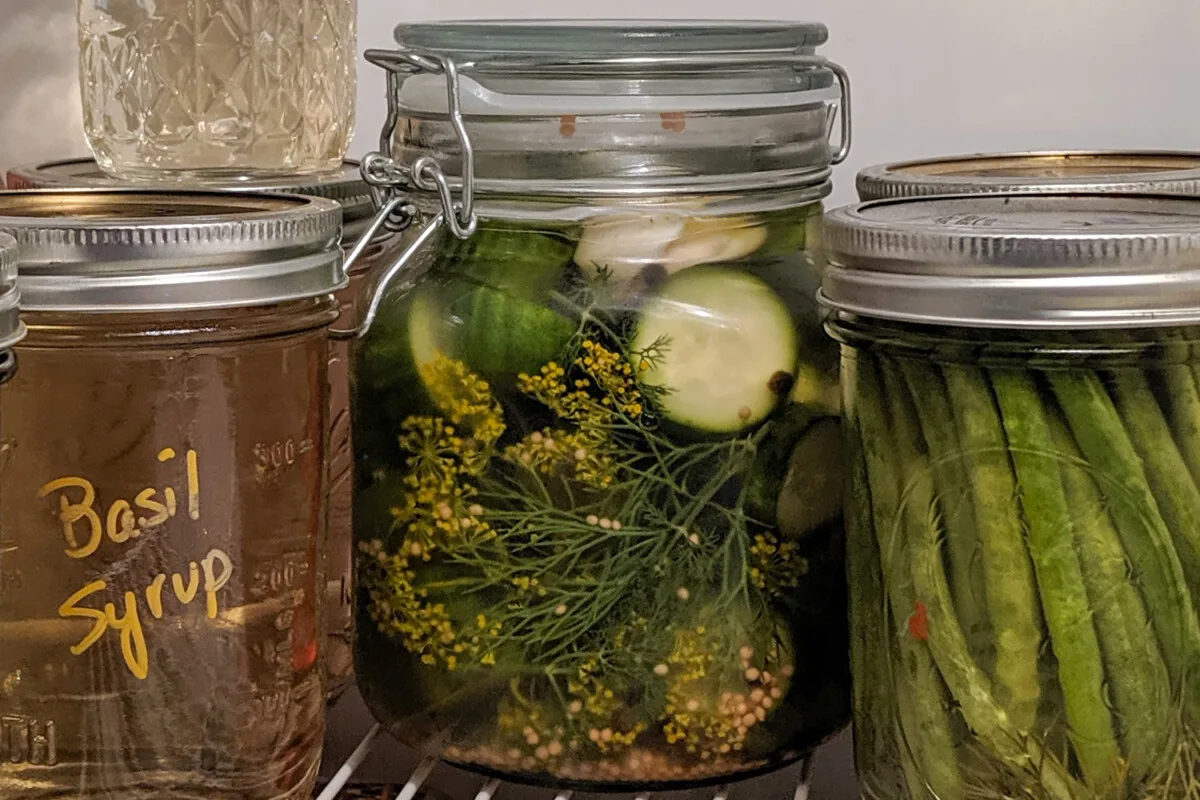
Because, let’s face it, biting into a crisp, refreshing cucumber from your garden or a crispy refrigerator pickle is one of the distinct pleasures of summer. Add to that how easy they are to grow and how prolific cucumbers can be, and it’s no wonder we all make room for them in our gardens.
But it’s this prolific spread and abundance that can have us wondering if we shouldn’t prune them to rein them in a bit or to force more fruit.
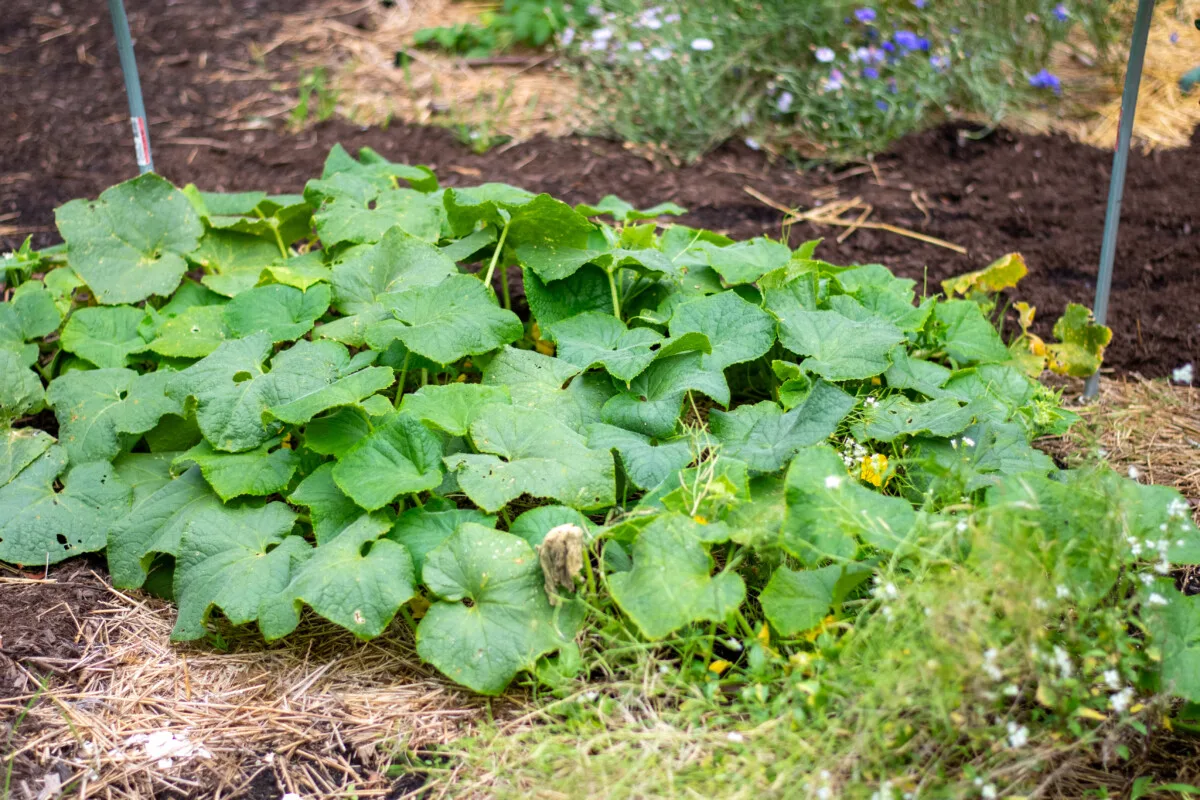
However, there’s only one instance where regular pruning is necessary for cucumbers.
The Cucumbers that Don’t Need to Be Pruned
If you’re growing bush cucumbers, you can close this article and go about your day. Bush-type cucumbers don’t need pruning as they have been bred to reach a specific height and stop growing. They’re quite similar to determinate tomatoes. You can trim off a few of the bottom leaves to ensure good airflow between the plant and the ground, but beyond that, they don’t need to be pruned.
If you’re not growing bush cucumbers, keep reading.
Cucumbers suffer from the same misinformation that tomatoes do. Everyone gets hung up on those “suckers.”
But knowing how a vine grows will help you to understand the pruning needs of cucumbers, when you need to prune them and when you don’t.
When we plant cucumbers, everything starts with that central stem. All other growth comes from that. Once it’s established, the main stem grows in the same pattern all season long – 4-6” of stem growth, then a crotch or knuckle. Then another 4-6” of stem growth and then another knuckle. And so on until that first frost kills the plant. But here’s where people get confused.
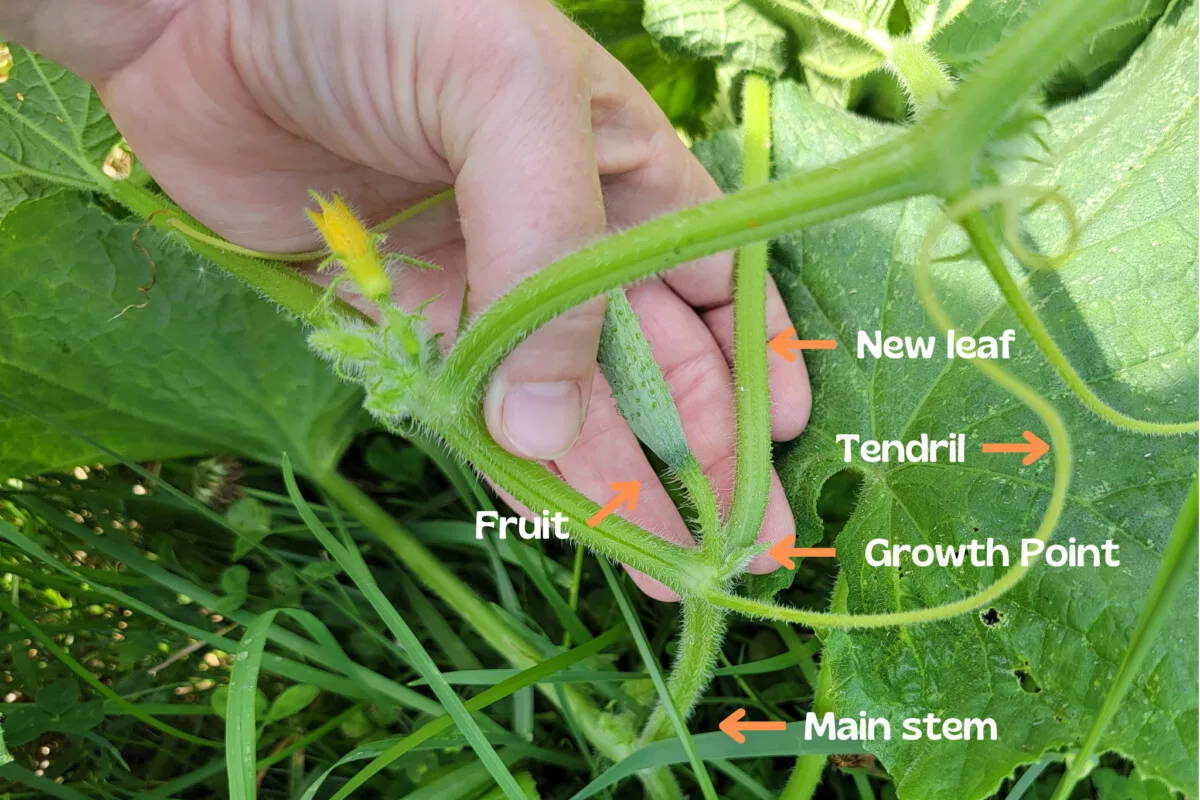
Several things will grow from each knuckle on the main stem:
- a tendril, used for clinging and climbing
- a blossom, which will turn into a cucumber
- a new leaf
- and sometimes, a new growth point or new “main” stem
It’s the growth point that gets all the attention. These tiny new stems have been dubbed suckers, much like new growth points on tomatoes. But in both cases, it’s important to remember that, botanically speaking, they aren’t suckers at all.
Suckers are small insignificant growth that occurs at the base of plants. They sap nutrients and energy from the plant and won’t mature into a new plant unless cut and propagated independently. These should be pruned from plants. They occur most often in trees and shrubs, such as this lilac.
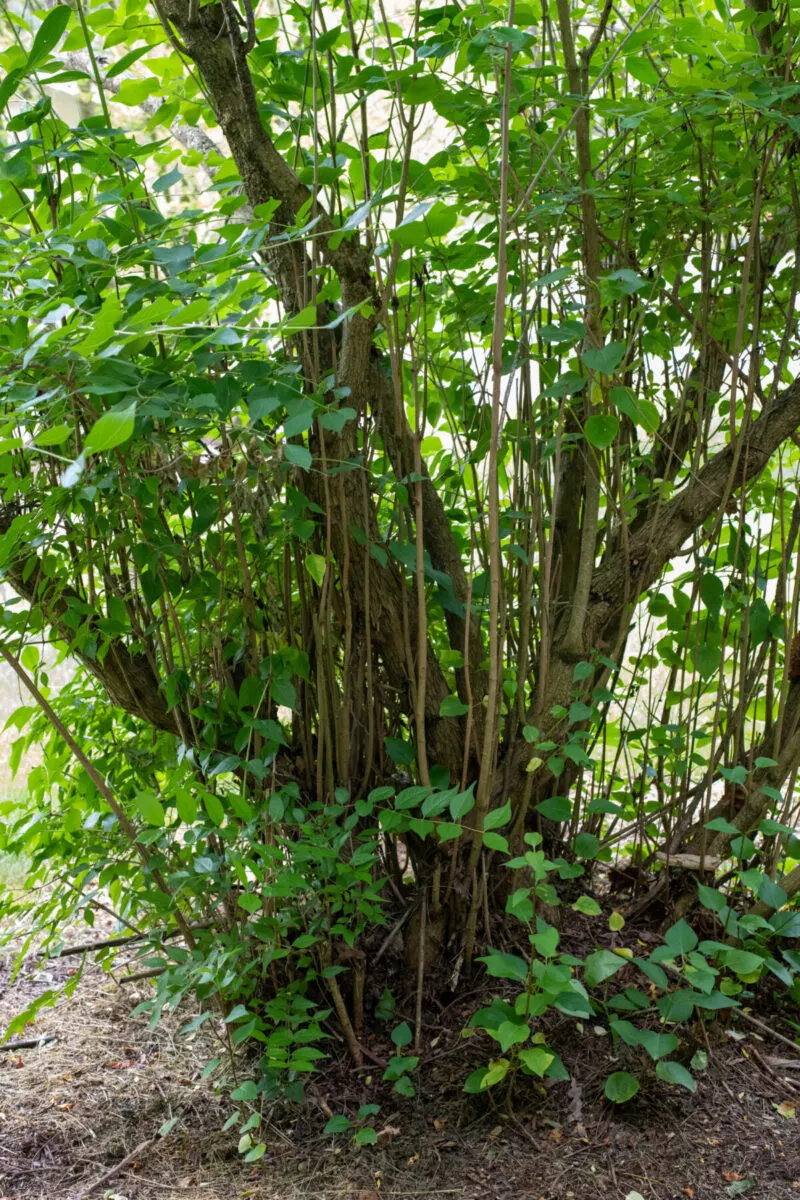
However, the new growth points on cucumbers (and tomatoes) aren’t suckers.
Left to grow, they will produce new leaves and fruit and even more new growth points.
Okay, but don’t they sap nutrients from the plant?
No, because, as we already discussed, these are not true suckers. They are new growth points that will also produce leaves and thus will produce their own energy to sustain that part of the plant.
The best way to explain it is to think of a cucumber vine as a road.
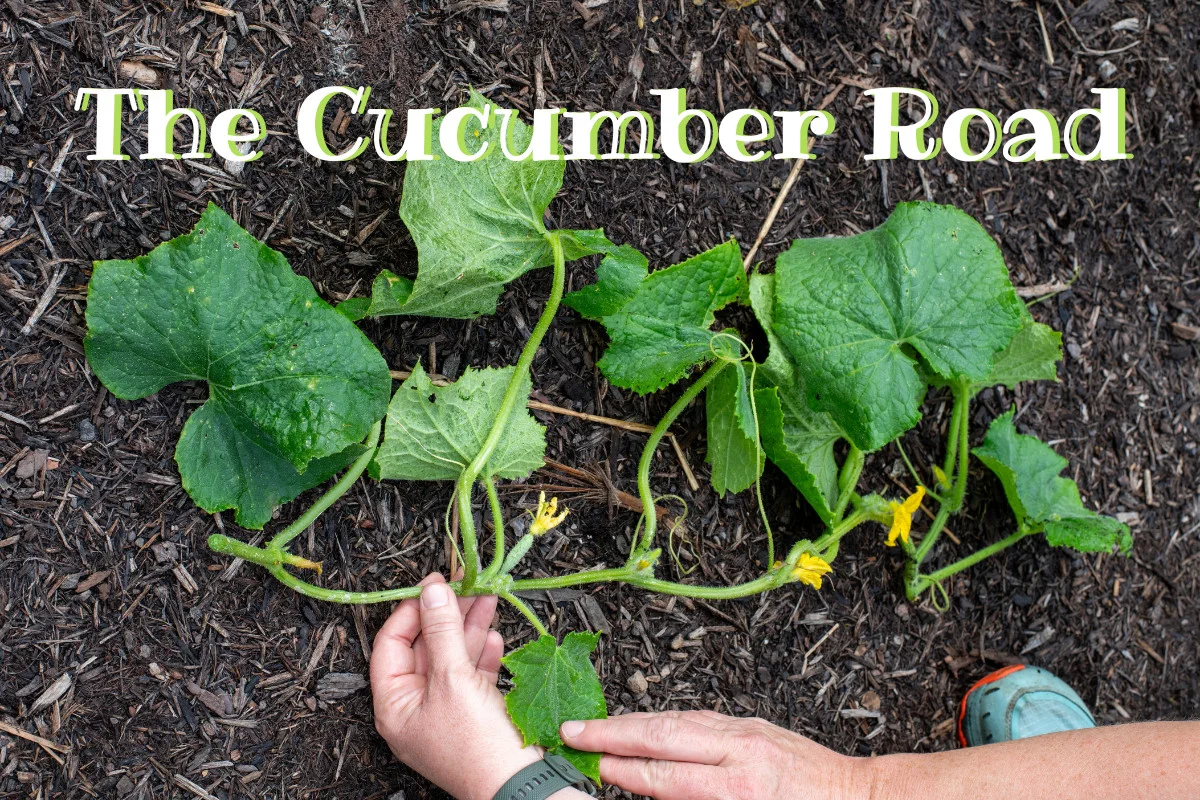
Every few miles along this road, there’s an outpost (the crotch or knuckle). This outpost has its own solar power station (the new leaf), which is anchored in place (by the tendril), and it produces its own supplies for that outpost (the fruit) from the power supplied by the solar power station.
Sometimes, at one of these outposts along the road, you’ll also get a new road branching off from the main road. That’s fine. The main road will keep going, with self-sustaining outposts every few miles. And the new side road branching off from the main road will do the same.
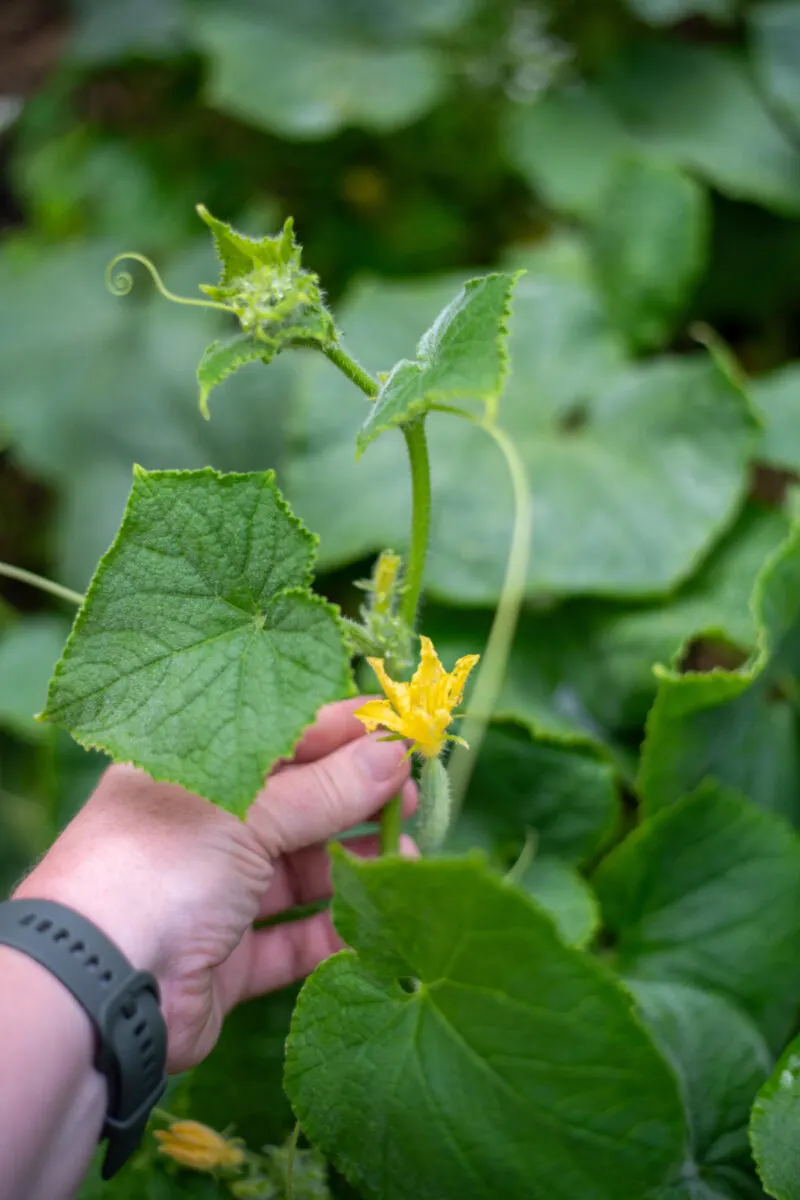
So no, you don’t need to prune the new growth points on cucumbers, especially if you’re growing them on the ground. You can let the plant continue to make new “roads and outposts.”
However, using my road analogy, you’ve probably figured out when routine pruning is necessary – when you want a straight road. Or rather, when growing cucumbers vertically up a trellis or string.
Growing Cucumbers Vertically
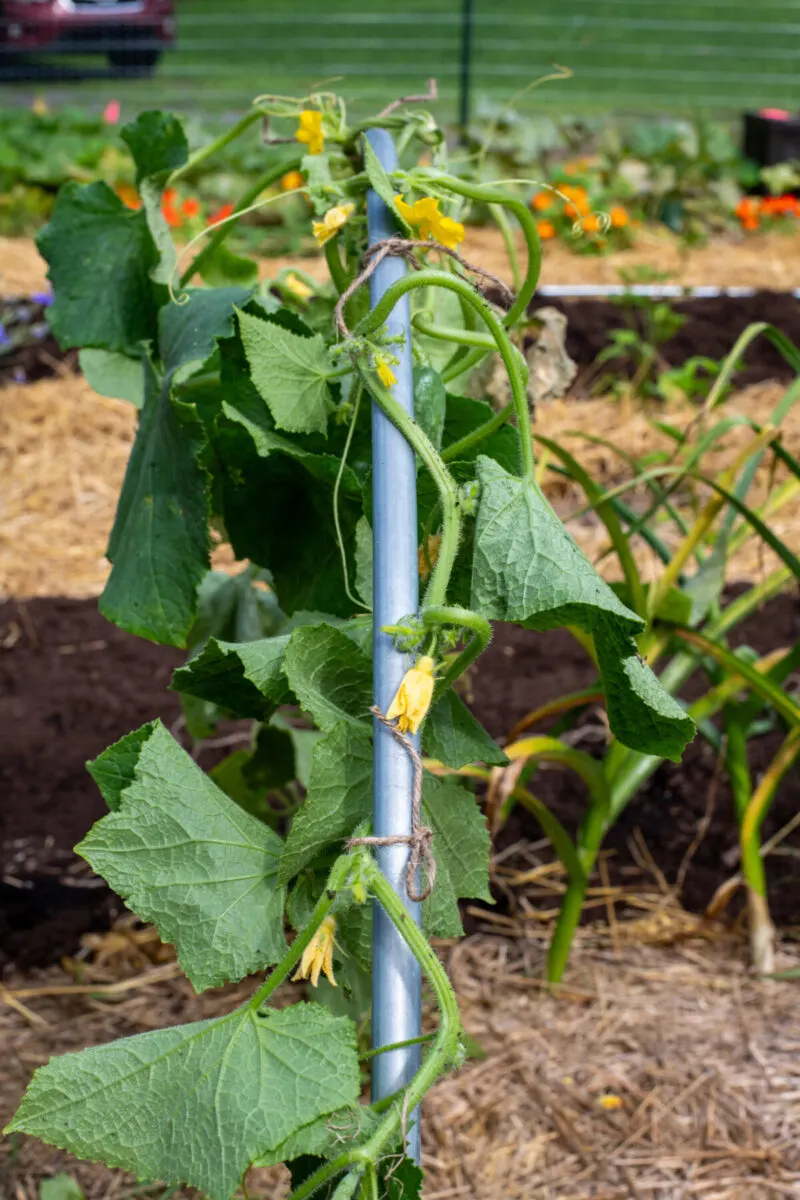
To save space, many gardeners grow cucumbers vertically up a trellis, and they do quite well, growing up instead of sprawling on the ground. However, it’s easier to train a cucumber upward in this case when you’re working with only one stem.
Starting as early as possible, you’ll want to prune off the new growth points from the main stem. Continue pruning in this manner throughout the season.
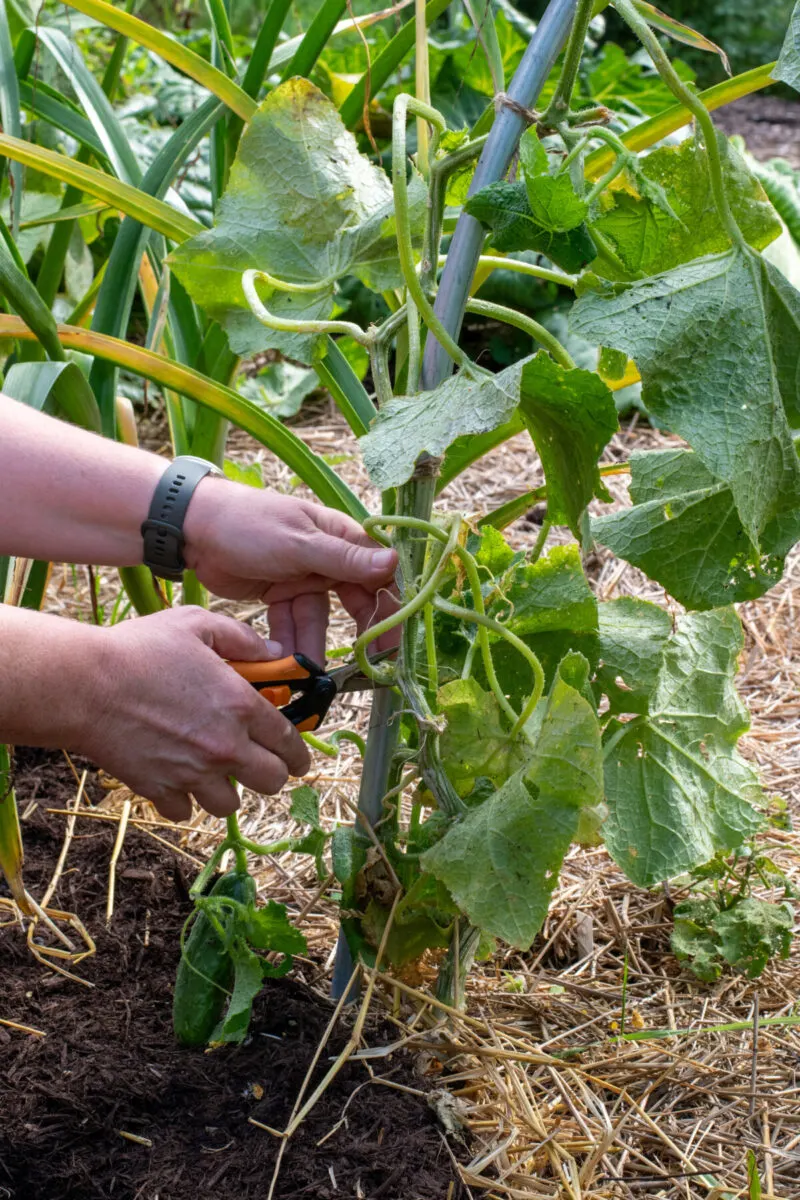
Despite the claims that this will encourage more fruit, it’s simply maintaining growth to one stem, which will keep producing fruit whether you pruned off side growth or not. If you’re growing cucumbers vertically, you can grow several plants to get lots of cukes rather than one or two grown on the ground.
Other Occasions When Your Cucumbers May Warrant a Trim
While cucumbers grown on the ground don’t need regular pruning, you may find there are a few times when you want to clean them up a bit. It’s important not to remove too many leaves, as they produce the energy needed to grow and provide shade for the growing fruit. Too much sun from a hard prune can lead to bitter cucumbers.
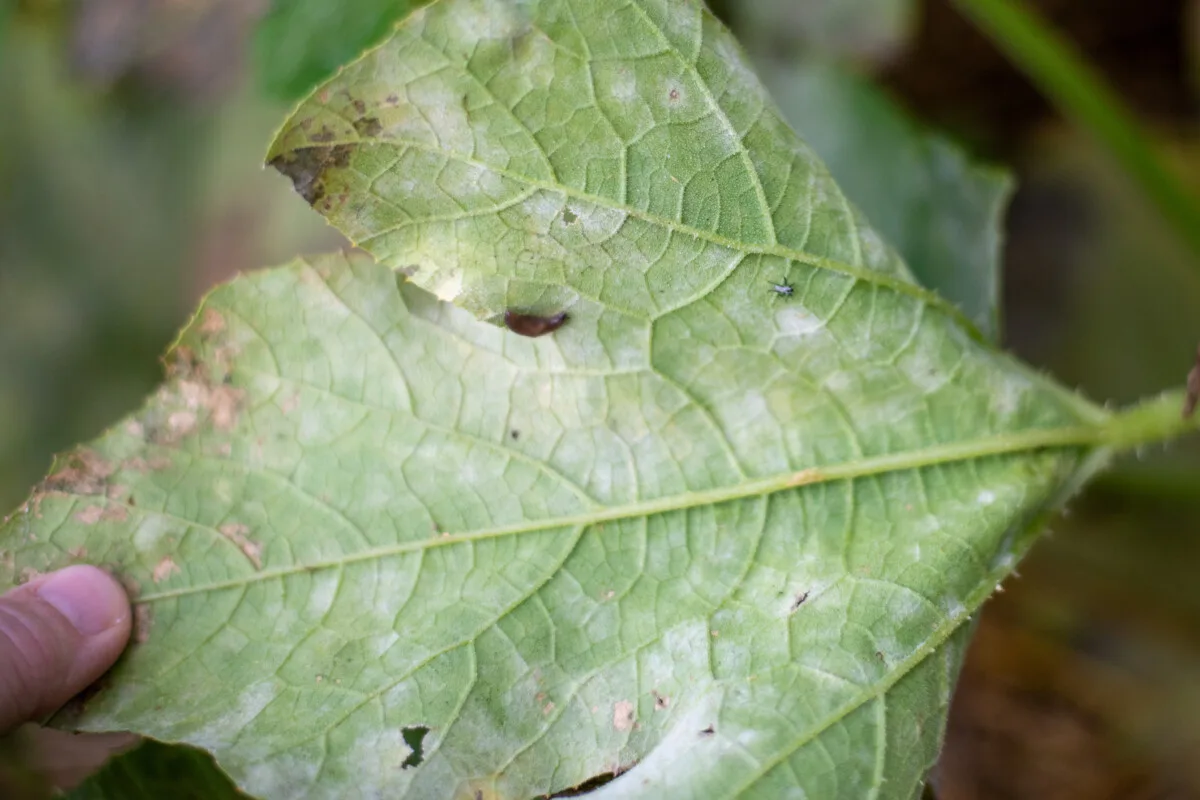
- During a particularly rainy or humid season when powdery mildew becomes a problem. Removing some leaves to open up the plant and encourage better airflow can help.
- To remove portions of a plant with severe pest damage or disease.
- At the end of the season, to encourage the last fruits to ripen, you may want to prune back all new growth, including the tip of the main stem. That is if you aren’t sick of cucumbers by then.
With all the chores that come along with gardening, you can rest easy, knowing cucumbers won’t add much more to your to-do list.

Get the famous Rural Sprout newsletter delivered to your inbox.
Including Sunday ramblings from our editor, Tracey, as well as “What’s Up Wednesday” our roundup of what’s in season and new article updates and alerts.

